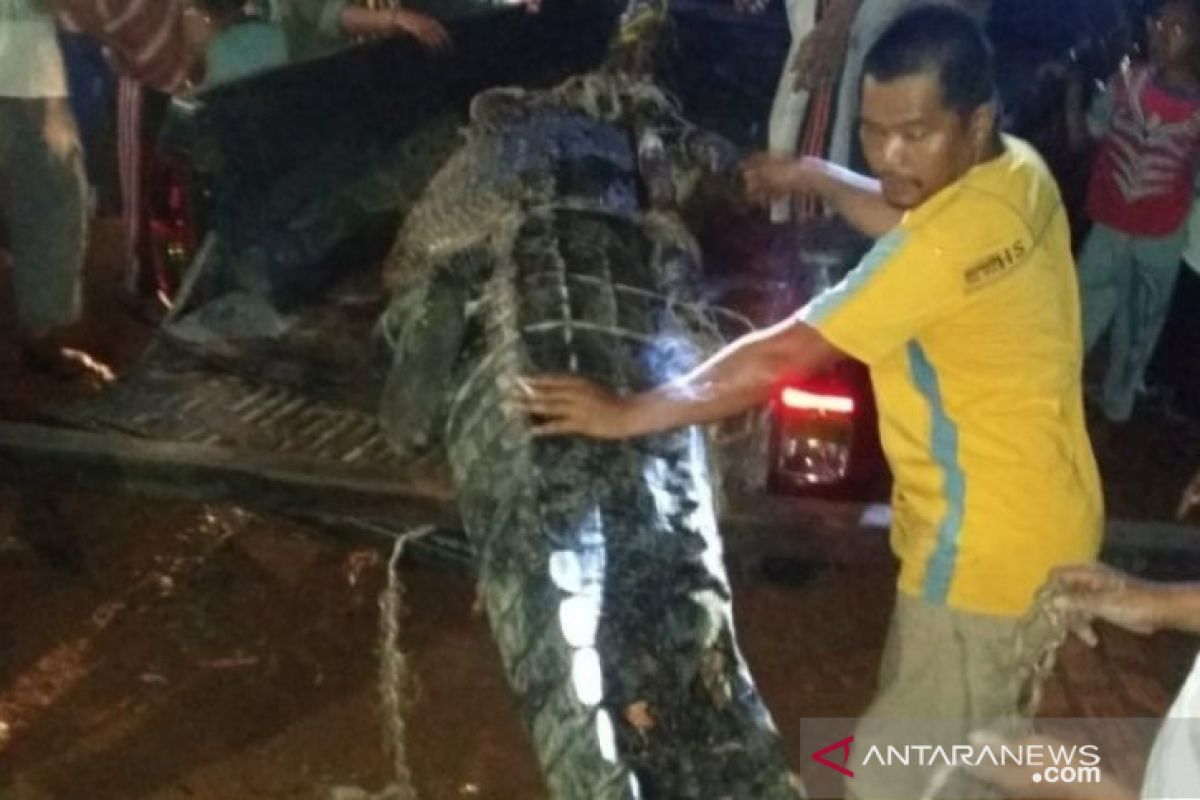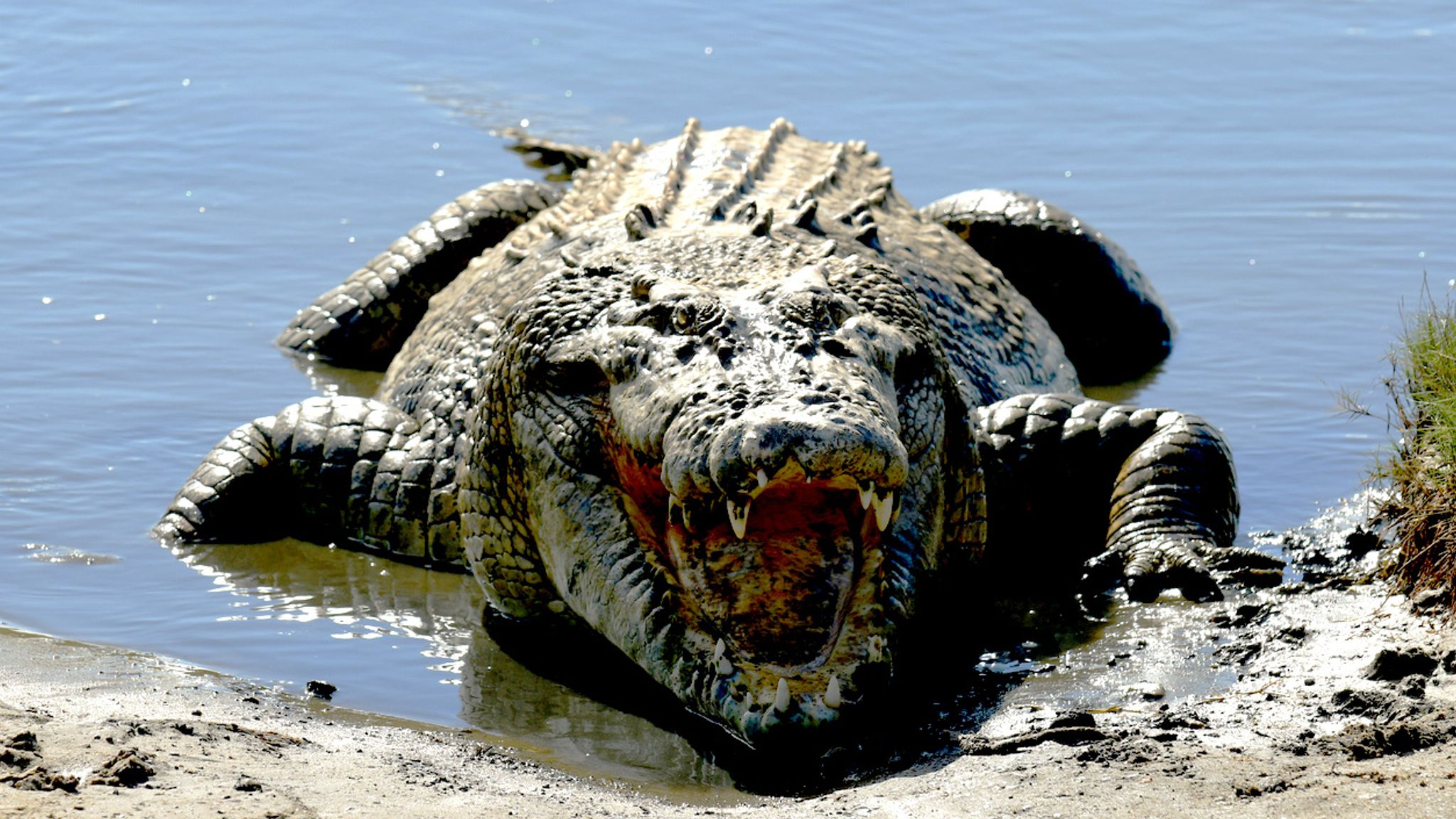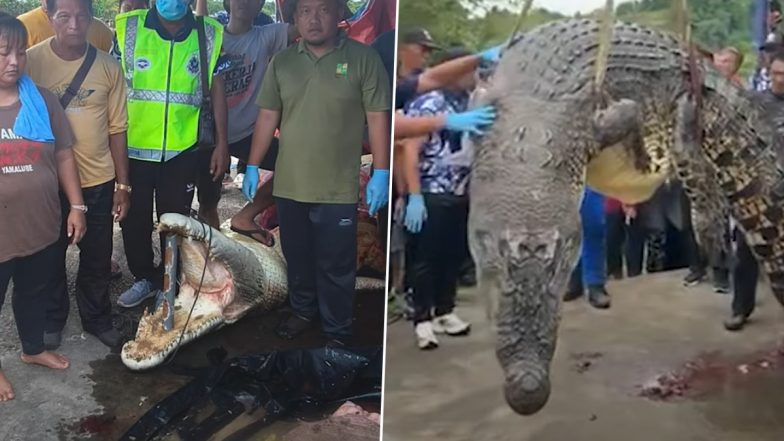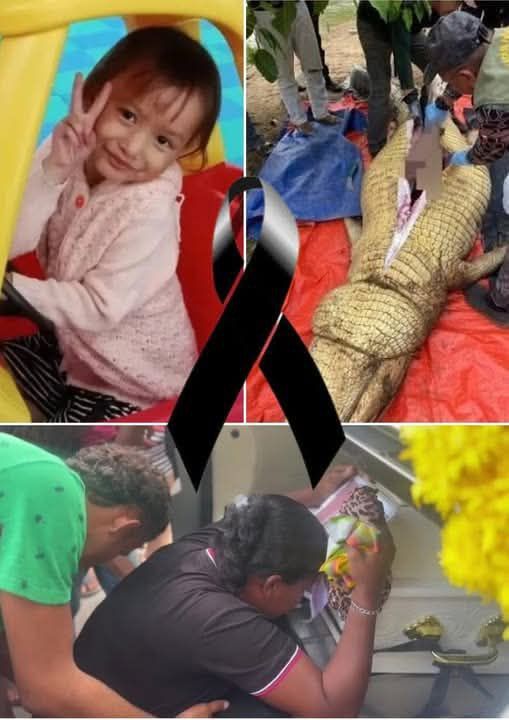Bangka, Indonesia — The coastal province of Bangka was struck by grief and shock on Saturday, January 11, following a fatal crocodile attack involving a five-year-old child. The victim, identified by local authorities as Caca, was with her parents near a lakeside area when the incident occurred. The tragedy has reignited conversations about safety in areas where humans and large predators share the same environment.
A Quiet Morning Turns to Tragedy

According to statements from residents, the family had been preparing to bathe in the lake at around 9 a.m. The site, though frequented by locals, is also known as a habitat for saltwater crocodiles. Eyewitnesses reported that the child was near the water’s edge when the crocodile appeared. The attack happened quickly, and despite immediate efforts by her parents and nearby community members, Caca was pulled into deeper waters.
Emergency services were called within minutes. Local police, members of the Bangka Belitung search and rescue team, and volunteers from nearby villages mobilized to begin a search operation. The rescue effort continued throughout the day, involving both water-based and shoreline sweeps.
By the following morning, January 12, search teams located the child. The crocodile believed to be responsible for the attack had already been captured by wildlife officials. However, authorities have not provided details on whether the animal was relocated or euthanized.
The Lake’s Environmental History

The lake where the incident occurred is not a natural formation but a remnant of historical tin mining operations that once dominated the Bangka region. Over time, the abandoned mining pits filled with water, creating new aquatic environments. These artificial lakes, while seemingly calm, can become attractive habitats for saltwater crocodiles, which are highly adaptable predators.
Saltwater crocodiles (Crocodylus porosus) are the largest living reptiles on Earth, with adult males capable of reaching lengths of up to seven meters and weights exceeding one ton. They are apex predators, highly territorial, and known for their ability to inhabit both freshwater and saltwater environments. In some parts of Indonesia, they have been observed adapting to human-altered landscapes, including former mining pits, irrigation canals, and coastal fish farms.
Local residents are generally aware of crocodile presence in certain bodies of water, but as Saturday’s incident shows, familiarity with a location does not eliminate risk.
Indonesia’s High Rate of Crocodile Attacks

Globally, Indonesia records one of the highest rates of crocodile-related incidents. Data compiled in 2014 documented more than 470 fatalities and 530 non-fatal injuries from crocodile encounters in the country. Experts suspect that the true numbers are even higher due to underreporting in rural areas.
Unlike in many other nations where crocodile attacks are relatively rare, Indonesia’s geography and climate provide ideal conditions for large crocodile populations. The nation’s extensive coastline, tropical wetlands, and slow-moving rivers are prime habitats for Crocodylus porosus. Additionally, fishing, bathing, and transport in crocodile-inhabited waters remain part of daily life for many rural communities.
Tourists have also been victims of crocodile attacks in Indonesia. A notable case in 2016 involved a foreign visitor in the Raja Ampat Islands, a renowned diving destination. This incident highlighted that the risks are not confined to remote inland areas, but can also be present in popular travel destinations.
Human–Wildlife Conflict: An Increasing Challenge

Conservation biologists emphasize that incidents like the Bangka attack are part of a broader global challenge: the increasing frequency of human–wildlife conflict. This phenomenon occurs when expanding human settlements, resource use, or recreational activities bring people into closer proximity with wild animals.
In Indonesia, rapid development, deforestation, and mining have altered many natural habitats. As a result, crocodiles may find themselves sharing spaces with human communities, often leading to dangerous encounters. Over time, some crocodiles adapt to these changes, exploiting man-made water bodies or preying on livestock near villages.
While the presence of crocodiles in these environments is natural from an ecological perspective, it becomes a public safety issue when humans use the same water sources.
Balancing Safety and Conservation

Saltwater crocodiles are a protected species under Indonesian law, recognized for their ecological importance as apex predators. They play a vital role in maintaining healthy aquatic ecosystems by controlling fish populations and preventing overgrazing of vegetation by certain prey species.
However, their protection also means that managing human safety requires careful planning. Wildlife authorities must balance the need to preserve crocodile populations with the responsibility to protect communities. Relocation programs, habitat zoning, and public awareness campaigns are among the strategies used to reduce conflict.
In some regions, warning signs are posted around crocodile habitats, and community-based monitoring programs are implemented. Yet, resource constraints and the sheer size of crocodile-inhabited areas make universal coverage challenging.
Community Response and Calls for Action
The death of Caca has deeply affected the Bangka community. Local leaders have called for increased public education on crocodile safety, especially in areas where artificial lakes and rivers are known habitats. Suggestions include:
-
Installing more warning signs in high-risk areas
-
Conducting regular patrols by wildlife officers
-
Providing alternative bathing or washing facilities away from crocodile habitats
-
Educating schoolchildren and families about recognizing crocodile presence and avoiding risky behaviors near water
Residents have also urged authorities to conduct further assessments of former mining sites, determining which have become crocodile habitats and which can be safely used for community activities.
International Perspective on Crocodile Safety
Crocodile management is a challenge shared by several countries, including Australia, Papua New Guinea, and parts of Africa. In northern Australia, for instance, “crocodile management zones” designate areas where crocodiles are actively removed if they pose a risk to people. Extensive public safety campaigns encourage residents and visitors to “be crocwise”—a program that teaches people to maintain safe distances from waterways, avoid risky activities at dawn and dusk, and heed warning signs.
Indonesia faces a more complex situation due to its vast geography, high human population density in some crocodile regions, and the reliance of many rural communities on natural water bodies for daily needs.
A Tragic Reminder
The loss of a young life in Bangka is a sobering reminder of the dangers that can exist in natural and semi-natural environments. While crocodile attacks remain statistically rare compared to other causes of injury or death, their impact is devastating, both for families and communities.
As human activity continues to expand into previously wild areas, the importance of proactive education, infrastructure planning, and wildlife monitoring becomes even more urgent. Experts agree that preventing future tragedies will require collaboration between local communities, government agencies, and conservation organizations.
Caca’s story now stands as both a local tragedy and a national cautionary tale. The hope among residents and officials alike is that this incident will spur meaningful action—ensuring that communities living alongside Indonesia’s remarkable but potentially dangerous wildlife are better protected in the future.
Sources: CrocBITE – Worldwide Crocodilian Attack Database | WWF Indonesia | Pew Research Center | National Institute on Aging

